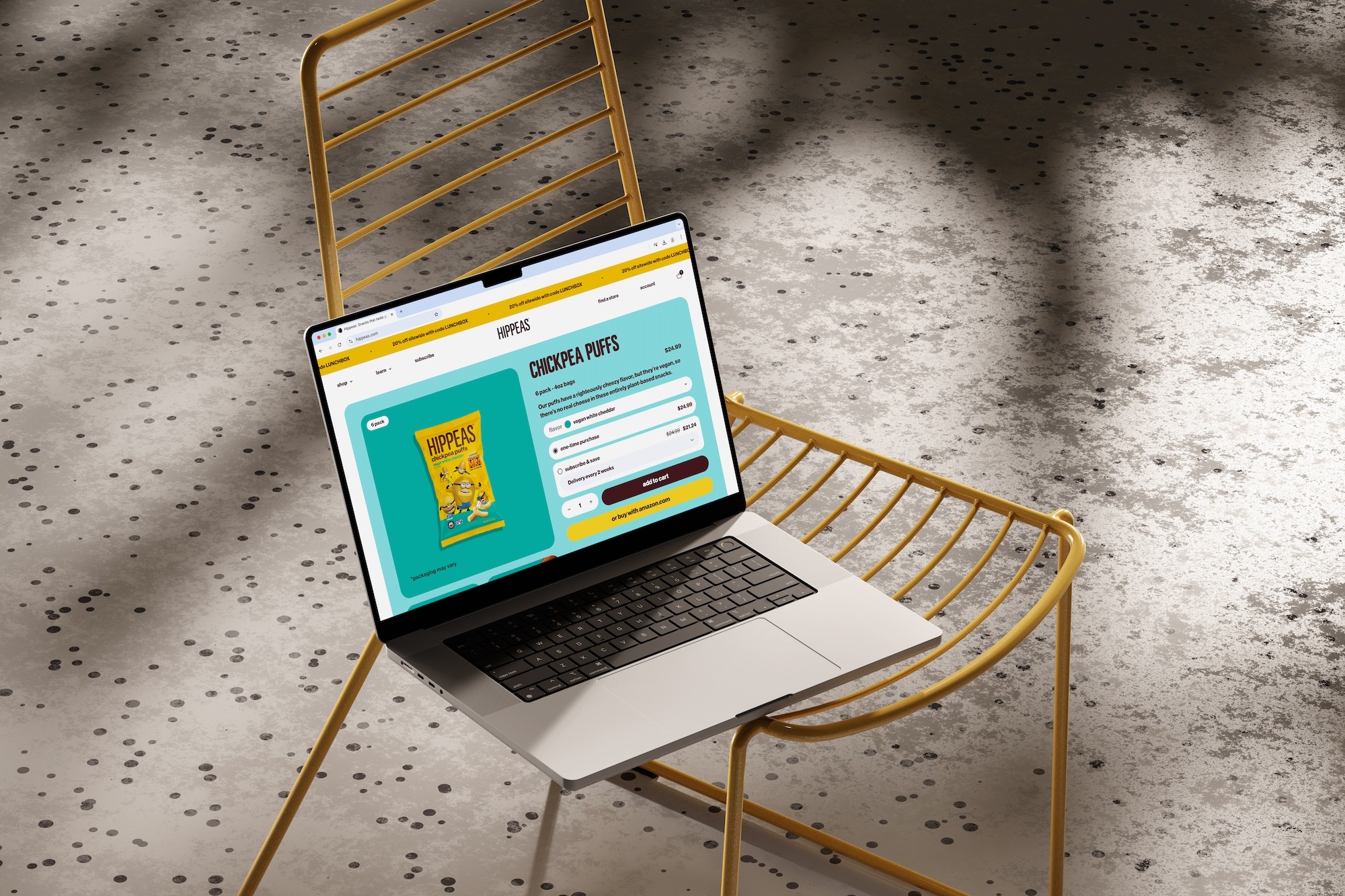Shopify

17.05.24
/
4 min.
by
Laynie Pritchard
Share Article
In today’s digital world, a visually appealing and high-performing online store is essential for direct-to-consumer (DTC) brands. Shopify has become the go-to platform for many of these brands due to its powerful tools, ease of use, and customization options. However, creating a Shopify store that doesn’t just look good but also converts visitors into loyal customers requires a strategic approach. Here, we’ll explore some key design tips to help you create a high-impact Shopify store that truly resonates with your target audience and drives results.
1. Start with a Clean, Cohesive Theme
Your Shopify theme is the foundation of your store’s design, and choosing the right one is crucial. Look for themes that align with your brand’s aesthetic and values. Clean, minimalist themes often work best for DTC brands as they allow your products to take center stage.
Pro Tips:
Keep it simple: Avoid cluttered layouts and focus on a clean design that highlights your products.
Invest in customization: While Shopify offers a variety of pre-made themes, customizing your theme can make your store stand out. Consider hiring a professional to tailor the design to reflect your brand’s unique personality.
Optimize for mobile: Since a significant portion of online shopping happens on mobile devices, choose a theme with a mobile-first design or ensure it’s highly responsive across devices.
2. Use High-Quality Visuals
DTC brands rely heavily on visuals to create a strong first impression. High-quality images and videos are non-negotiable. Invest in professional photography to showcase your products in the best light, with multiple images that allow customers to zoom in and view different angles.
Pro Tips:
Showcase lifestyle images: In addition to product shots, include lifestyle images that show your products in use. This helps customers imagine themselves using your products, increasing emotional engagement.
Incorporate video: Videos are a powerful tool for capturing attention. Consider adding short videos to your product pages that demonstrate the product’s features or show it in action.
Consistent branding: Use consistent filters, backgrounds, and styling for all images to ensure a cohesive brand aesthetic across your site.
3. Craft Compelling Product Descriptions
Your product descriptions should do more than just describe the product—they should tell a story. Use language that resonates with your target audience and highlights the unique benefits of your products. Remember, DTC customers are looking for brands that align with their values and lifestyle.
Pro Tips:
Focus on benefits: Highlight how your product solves a problem or enhances the customer’s life, rather than just listing features.
Keep it concise: Avoid lengthy paragraphs. Instead, use bullet points to list key features and benefits for quick and easy readability.
Incorporate SEO keywords: Include relevant keywords naturally to improve your store’s search engine visibility and attract more organic traffic.
4. Streamline the Navigation
A seamless, intuitive navigation structure is essential for a positive shopping experience. Make it easy for customers to find what they’re looking for without having to click through multiple pages. Your navigation bar should include only the most essential categories and links.
Pro Tips:
Limit menu options: Aim to have no more than 5-7 main menu options to avoid overwhelming visitors.
Add a search bar: A search function is particularly useful for stores with a larger product catalog, helping customers find specific items quickly.
Use collections: Organize your products into collections (e.g., “New Arrivals,” “Best Sellers,” or “Gifts”) to make browsing easier and help customers discover more products.
5. Optimize the Checkout Process
The checkout experience is one of the most critical parts of the customer journey. A complicated or lengthy checkout process can lead to cart abandonment. Ensure your checkout flow is straightforward, quick, and user-friendly.
Pro Tips:
Enable guest checkout: Allow customers to check out without creating an account, which can reduce friction and increase conversion rates.
Minimize form fields: Only ask for essential information to keep the process as short as possible.
Show progress indicators: If your checkout involves multiple steps, use a progress indicator so customers know how many steps are left.
6. Leverage Social Proof
Trust is a major factor in a customer’s decision to purchase from a DTC brand. Social proof, such as customer reviews, testimonials, and user-generated content, can help build credibility and encourage conversions.
Pro Tips:
Display reviews prominently: Feature customer reviews on product pages, as they can significantly impact a buyer’s decision.
Incorporate user-generated content: Showcase photos or videos of customers using your products. This not only builds trust but also fosters a sense of community.
Highlight media mentions: If your brand has been featured in reputable media outlets, include those logos or quotes on your homepage to boost credibility.
7. Utilize Email Pop-Ups and Retargeting
Capturing your visitors’ email addresses is crucial for building a customer base and driving repeat sales. Use an email pop-up to offer a discount or special promotion in exchange for visitors’ email addresses. Additionally, retargeting ads are a powerful way to bring visitors back to your site and encourage them to complete their purchase.
Pro Tips:
Offer value: Make the email sign-up offer compelling by including a discount, free shipping, or exclusive content.
Timing matters: Avoid showing pop-ups immediately. Instead, set them to appear after a visitor has browsed for a few seconds or scrolled down the page.
Retarget with personalized ads: Use retargeting ads to remind customers of products they viewed or left in their cart, increasing the chances of conversion.
8. Measure and Analyze Performance
To continuously improve your store, you need to understand what’s working and what’s not. Shopify’s built-in analytics and reporting tools allow you to track key performance indicators, such as traffic, sales, and customer behavior.
Pro Tips:
Track customer journey: Use Google Analytics in addition to Shopify’s analytics to gain deeper insights into how customers interact with your site.
A/B test elements: Test different elements, such as call-to-action buttons, product images, or checkout layouts, to see which variations drive better results.
Regularly review data: Make it a habit to check your store’s analytics regularly and use the insights to inform your design and marketing strategies.
Conclusion
Building a high-impact Shopify store that converts requires a balance of strong visual design, user-centric navigation, and strategic marketing. By focusing on these core design elements, you’ll be well on your way to creating an online store that not only looks amazing but also resonates with your audience and drives conversions.
If you’re ready to elevate your Shopify store, Mint Lane Studio specializes in designing and optimizing Shopify stores tailored to your brand’s needs. Let’s chat about how we can create a custom, high-converting Shopify experience for your DTC brand. Contact us today to get started!

Other Articles


